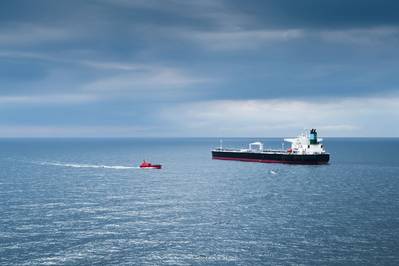North Sea Floating Oil Storage Jumps to Highest Since Early 2022
Trader Gunvor and French major TotalEnergies have stored North Sea crude in at least four tankers in the past month as on-water stockpiling of the grades hits a 2-1/2 year high, a fresh sign of weak appetite for oil from refiners.
At least 2.6 million barrels of North Sea crude grades Forties and Gullfaks have been put in floating storage in Europe, the highest volume since January 2022, according to data from analytics firm Vortexa.
Physical oil markets have weakened globally in recent weeks, as lacklustre consumption has coincided with ample supply and higher inventory levels.
"This is more about weak short-term demand, rather than market structure driving floating storage," Vortexa's senior oil risk analyst Armen Azizian said.
He added that North Sea barrels were competing with robust supply of light non-OPEC grades such as those from the U.S., and that refinery demand for crude processing is capped by already-strong supply of fuels.
The Forties cargoes loaded on May 7-12 and are idled off the UK and Dutch coasts, Vortexa data showed.
The Gullfaks cargo, meanwhile, has been in floating storage since May 20 in the Adriatic Sea. It has declared the nearby port of Trieste as its destination, which could be a sign that it is awaiting a slot to discharge, according to Azizian.
Gunvor, which according to data from ship tracking firm Kpler chartered all three of the Forties-laden tankers, declined to comment on the trades. TotalEnergies, which according to Kpler chartered the Norwegian cargo, did not respond to Reuters' request for comment.
Floating storage can be lucrative when traders profit from a forward structure in the oil market known as contango, when they buy oil at weak prompt prices and resell it at stronger future prices.
For the storage play to work the premium of future months to prompt months needs to be higher than the cost of booking a vessel to hold oil on the water.
Sources said the contango structure would need to be at least 60 cents per barrel per month for floating storage to be profitable, though others pegged the number at closer to $2-3, taking into account costs for financing and demurrage, or charges for delays in unloading cargoes.
By comparison, the six-week short-term Brent swap forward curve was around 56 cents per barrel in contango on Wednesday.
The build-up of floating storage has also coincided with a sharp drop in Forties prices in the spot market, pressured by poor demand.
Forties assessments dropped to a $1.05 per barrel discount to the dated Brent benchmark on June 5, from a 55 cent per barrel premium at the end of April, according to LSEG data.
(Reuters - Reporting by Robert Harvey and Alex Lawler, Editing by Jan Harvey)












